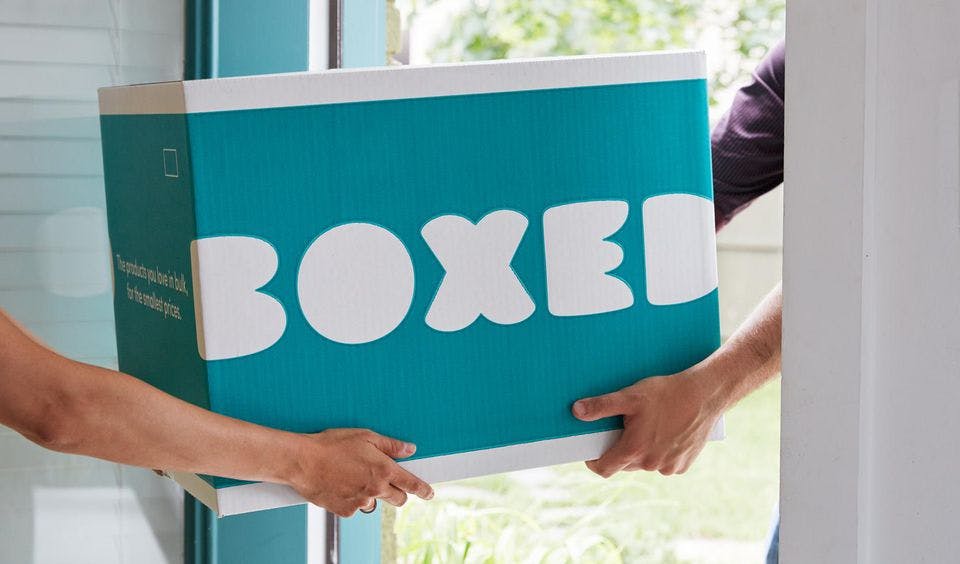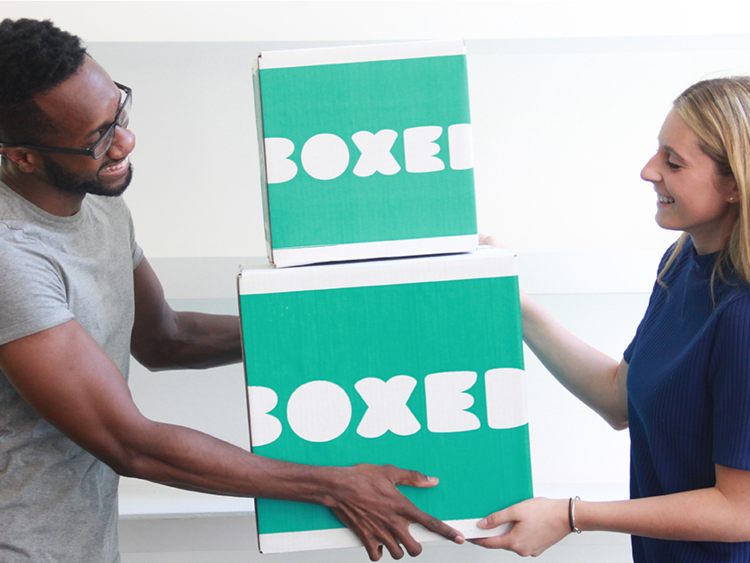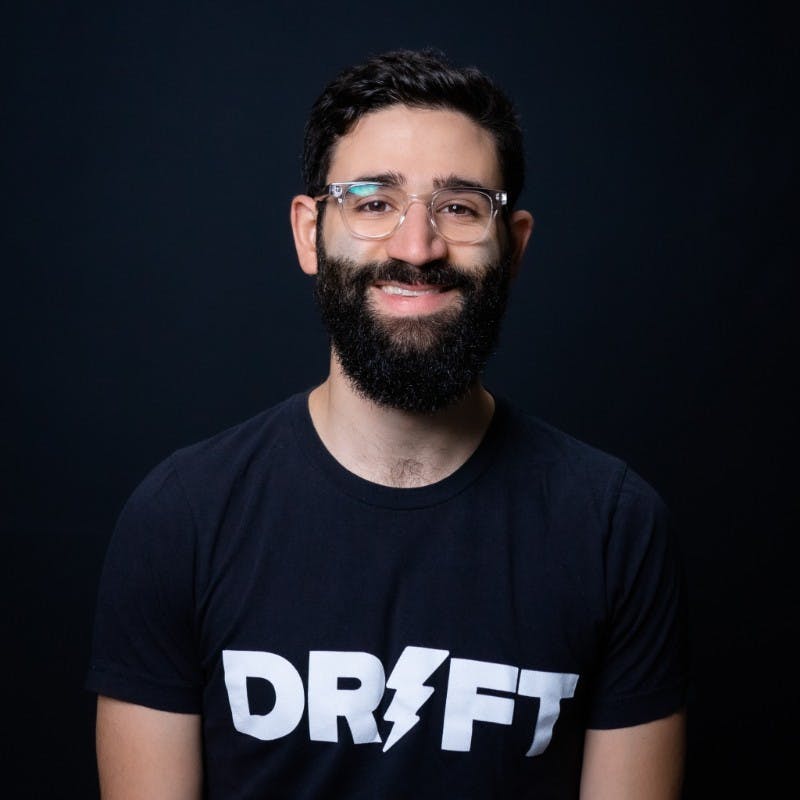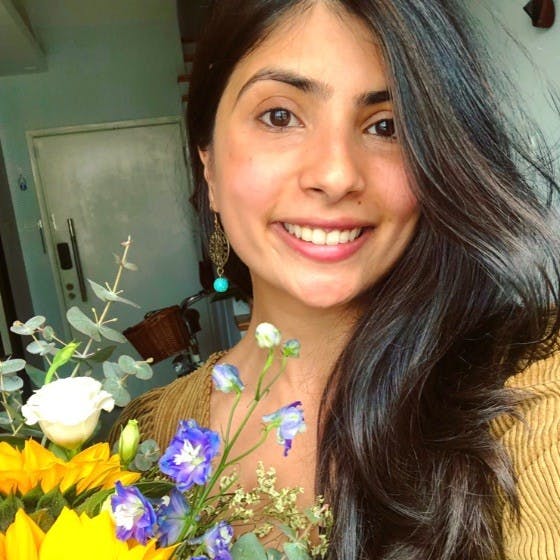Season 1 - Episode 6
Going from Entry Level PM to VP of Product
In this episode, we explore some alternative perspectives of Product Management with Andrea Chesleigh of Boxed.
With 14 years of experience under her product belt, Andrea has gone from an entry-level PM to VP of Product by creating impactful work at companies like Verizon, Zappos, Rent the Runway, One Kings Lane, and finally Boxed.
See how her experience has shaped her insights, and let us know what you think of her impressive array of Product knowledge.

Question [00:01:16] Did you ever wonder how the biggest services, brands and products were developed when you were growing up? Did you ever think of how people interacted with products or why they were built a certain way?
Andrea [00:01:31] You know, this is such a great question.
I didn’t necessarily consider this with the biggest services and brands, but as a kid, I was really super curious. I always wanted to know how things worked or how something was built. I loved to experiment andtake things apart.
I was that kid with like the microscope, the chemistry set, the Legos, and so I always ended up breaking them because I wanted to see the components.
I even remember one time I just wanted to see what would happen if I combined all the chemicals that came with my chemistry set; of course I did that and naturally I created this really disgusting gunk that just burned through the test tubes. It was super fun.

Question [00:04:08] You studied English and Fine Art at City University in New York. What do you think about the humanities? Did it help you prepare for product management?
Andrea [00:04:22] I started in Columbia as a computer science major, but as a kid, I also loved art and music. It was super hard to decide what to major in, and I think ultimately a liberal arts education allows you to have the best of everything, right?

If you think about applications in technology or applications in building a solution for a problem, there is a lot of creativity. Additionally, there’s a lot of philosophy mixed with social sciences which fits in well with Product Management.
I think that’s one of the things that one can lose by being so specific with certain studies. For example, if you’re just into computer science — which is still incredible — you kind of lose all of that other components that you can take into your day-to-day [as a Product Manager].

If you think about Leonardo Da Vinci, he was a very influential figure who was curious about fine arts, but he also dabbled in sciences. He was a true a renaissance man, and so that’s what I think liberal arts brings to the discipline of product.
Question [00:08:13] In your case, after a year you were already senior product manager at Verizon and you were in charge of the website. What was different about managing a website 15 years ago? Also, what was the most important factor in designing a successful user experience during that time and what has changed?
Andrea [00:08:53] What was wonderful about Verizon is that they wanted to be leaders in the digital space, which means the products were digital products like broadband and entertainment. And because they wanted to be ahead, we were willing to try everything; so to your point, digital was this open wonderful space.
We were partnering with very technology forward agencies thinking about how do we approach these different challenges. We then became aware that this was a much consumer-facing product, and early on we understood the value of a user-centric approach plus user-centric design.
Making sure that we were close to our users by speaking to them through various methodologies like surveys, focus groups, in addition to phases of usability testing such as paper prototypes, partnering with agencies. It was the biggest thing that we focused on in order to get it right.
Question [00:12:34] How do you pick your metrics? I’ve spoken with many PMs telling me that retention is usually what they’re looking at. What’s your opinion on this?
Andrea [00:12:45] That’s a really great question, and I was actually just talking to my PM’s about this.
As a PM, you have to think about what your goals are and what you’re trying to achieve. There’s specific success criteria for the more immediate things that you’re trying to do, and you have to be thinking about the goal.

If you think about the solution or feature you’re building, you have to ask what is its job? By asking this, you’re able to create the specific success criteria.
Then there’s going to be universal KPIs that you’re always going to look at. For us, being an -c, our universal KPI is always going to be conversions. For example, we are constantly testing to see how efficient and effective we are at getting the customer to place an order.
You have to look at KPIs in those two ways. There is the specific success criteria for that immediate features, as well as the universal KPIs that you need to look at to ensure there’s a success for the business and the overall customer journey that you’re trying to create.
Question [00:30:00] You recently became VP of Product at Boxed. Could you describe a little about the problem and the solution that the company’s aiming to provide? What was your motivation in taking your current role?
Andrea [00:31:08] Boxed is an online wholesale club, so if you think about shopping for bulk goods — like household items for example — you’re able to do that with Boxed conveniently. Moreover, you can do it from anywhere without having to go to a brick and mortar store.
What I personally find exciting about [Boxed] is that we are trying to solve the problem of making it easy for everybody to buy household goods and basics in bulk. So for me, coming into -commerce and retail is something that I’m still very much excited about, even after 15 years in this space.

It is also a variety of products that people need, ranging from fashion to household goods, and items that people truly need. I think it creates different challenges, right? Because you have to get into the customer mindset and the customer life cycle when it comes to buying household goods. For example, there’s not a lot of contemplation that you would do with buying a bulk-sized box of cereal (for example), or pack of toilet paper, compared to contemplating buying a new couch for your flat.
And so how do we have to figure out how we can help our customers in this space. We have to ask ourselves how can we give them the gift of time and convenience and value.These are the things that we are constantly thinking about at Boxed, because we are a customer centric top company.
Question [00:34:54] How big is the team you’re directing? And then how big is your current pool of stakeholders? What is the difference between the two?
Andrea [00:35:12] Right now the gap is pretty big, I have to admit. That’s also one of the reasons I joined Boxed. That being said, being at One Kings Lane was so wonderful, and was such a great opportunity. I really got a chance to build out a team and contribute not just to the company, but also to the customers that we’re serving.
So I really wanted to reset and do that again. The size of my team at oxed is very small. Currently, I have two PMs, and I get the chance to build that out, which is very exciting. And so when I say to you that the gap is pretty big, you have to think about the rest of the company plus the customers; those are all my stakeholders, and so consequently I am hiring and building out beyond the product team.
Have your own thoughts on the topics covered? Then drop us a line on Twitter. We want to hear from you and don’t forget to join us next week for fresh insights.
Join us next week to hear from Carlos Roque from Magic Leap.
Listen to our episodes on your favorite platform
Stay tuned for new episodes
By sharing your email, you agree to our Privacy Policy and Terms of Service






